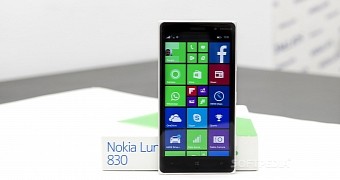Right now, Windows Phone and Windows 10 Mobile are two things of the past, as Microsoft has officially pushed its mobile platform to maintenance mode and is only keeping it alive until mid-2019 when support finally comes to an end.
Beyond this point, no other security patch would be shipped to Windows phones, so rather sooner than later, everyone would have to migrate to Android or iOS.
The reasons that turned Windows Phone from a platform with so much potential to succeed to one that failed entirely have been overly-discussed, but this topic made the headlines once again last week when Windows chief Terry Myerson announced his departure from Microsoft.
In a goodbye letter published on LinkedIn, Myerson detailed his tenure at Microsoft, also discussing the reasons Windows Phone failed despite his efforts to keep the platform alive. Here’s an excerpt relevant to Windows phones from the letter:
“We had a differentiated experience, but it’s so clear in hindsight that the disruption in business model which Android represented was enormous, and that building our early versions of Windows Phone on an incomplete Windows CE platform, designed for small embedded systems, left us too hobbled to ever catch up.”
In short, Myerson says that Microsoft couldn’t make Windows Phone a hit because it was busy addressing the shortcomings of the platform it was based on. This never allowed the company to compete with Android and iOS, Myerson said, as the software giant has always been one step behind its rivals.
Meanwhile, the majority of users claim the death of Windows phones is more or less the result of the lack of apps, which in its turn was caused by developers not very interested in building apps for Microsoft’s mobile platform. Eventually, this was the consequence of Microsoft’s not making its mobile operating system compelling enough for developers.
But if you ask Brandon Watson, who was a Senior Director for Windows Phone until 2012, that’s not the reason. Instead, Watson says, the lack of apps wasn’t what dragged down the platform, but the lack of carrier and OEM support for Windows. In other words, carriers not supporting Windows phones and manufacturers not building devices running the operating system is what pushed Microsoft’s mobile platform well behind its rivals.
“Windows Phone died because it would have been almost impossible to beat Google or Apple without carriers and handset manufacturers embracing it. We got second string devices and almost no support at the carriers. They couldn't keep burning money to please Sisyfus,” he explained.
So there you go. Right now, we have three different reasons for the demise of Windows phones, each coming from different people, each more involved than others in the life of the mobile OS.
Terry Myerson says Windows Phone couldn’t get closer to Android and iOS because of Windows CE, Watson believes the lack of carrier support and OEMs committed to Windows phones killed the platform, and users think too many apps missing from the store pushed everyone to rival mobile operating systems.
In the last few months, I’ve heard many people blaming none other than CEO Satya Nadella for Windows Phone going dark, and some said the aggressive push towards cloud and AI eventually made the mobile operating system a product that no longer made sense for the company.
Tim Sneath, a former Microsoftie for 17 years, believes this is exactly what’s happening to Windows right now, as the desktop OS is no longer a core product for the software giant given this rush for bigger revenues. The enterprise push is making consumer products less of a priority, and Windows Phone is believed to have been the first victim.
In the end, it looks like the death of Windows Phone is more likely to be the result of all of the above, despite different people having different views on it. And because you, the customers, are the ones who decide if a product is good or not, I’m going to ask you: who’s to blame for the death of Windows Phone?

 14 DAY TRIAL //
14 DAY TRIAL //